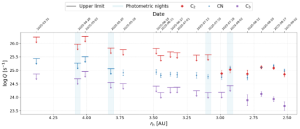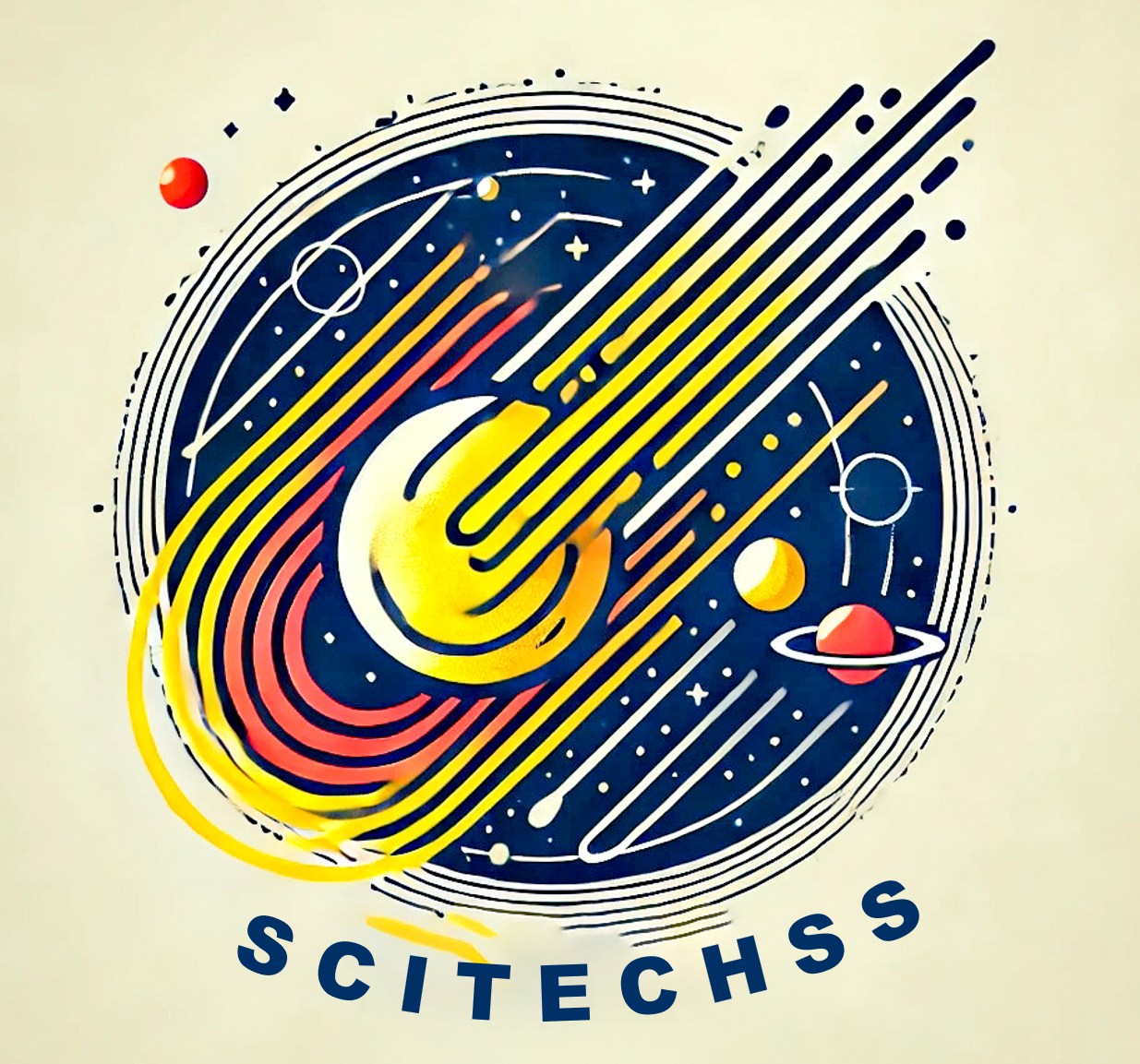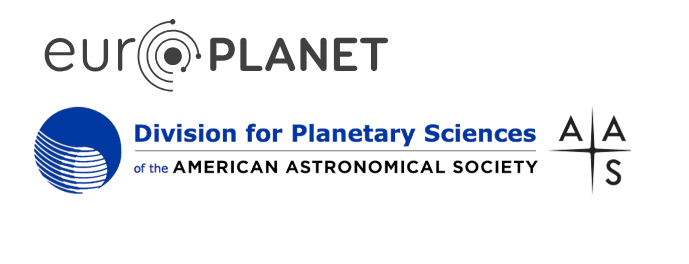This is going to be a little bit longer post as SCITECHSS group has attended the EPSC-DPS 2025.
Our PhD student Irene Mariblanca-Escalona presented the latest results from our comet observations. Her contribution highlighted the group’s ongoing work to measure the dust-to-gas ratio in comets, an observable that links coma measurements to the interior composition of cometary nuclei. Irene presented the first results of a long-term monitoring campaign of the dynamically new comet C/2024 E1 Wierzchos, a particularly exciting target because dynamically new comets are thought to preserve more pristine material from the early Solar System.
Using the CAFOS instrument at Calar Alto Observatory (Spain), our team obtains red-band images to study the dust environment and visible spectra to measure gas emissions from species such as CN, C₂, and C₃. This combination provides a comprehensive picture of the comet’s activity. Preliminary results indicate that gas activity in E1 was already present at large distances from the Sun, with clear detections of CN at 3.73 AU, C₂(3 AU), and C₃(2.8 AU). CN and C₂ show similar production rates, while C₃ is about ten times lower. A drop in activity observed at 2.5 AU in early September, visible in the figure below, could be related to rotational effects, as different regions of the nucleus may be more or less active. This pattern is still under investigation and will be further assessed with upcoming observations.

By tracking how the dust-to-gas ratio evolves along E1’s orbit, our project provides measurements that can be used to place constraints on the refractory-to-ice ratio in the nucleus, a key magnitude for models of comet formation, and on the distribution of ices in the early Solar System.
Link to the abstract, https://meetingorganizer.copernicus.org/EPSC-DPS2025/EPSC-DPS2025-830.html
Haifeng Xiao, a post-doc in our group, convened the session “TP13 Planetary Dynamics: Shape, Gravity, Orbit, Tides, and Rotation from Observations and Models”. Apart from that, he gave a talk about the first detection and quantification of Mercury’s long-period libration (periodic variations in its rotation rate) using NASA’s MESSENGER laser altimetric profiles. It is revealed to feature a period of around 6 years and is caused by planetary perturbation of Mercury’s orbit due to either Earth (6.6 y), Venus (5.7 y), or Jupiter (5.9 y), NOT Jupiter 12 y or Saturn 14 y term as previously expected. Its amplitude is amplified to around 18 arcseconds due to resonance with the free normal modes. In addition, he did a poster presentation about the orientation of Mercury’s spin axis and its Cassini state. The main conclusion is that Mercury’s tidal dissipation rate is relatively small, which is consistent with the elastic properties of a pyroxene-rich mantle. The rotation state a celestial body is deeply related to its density profile and layer couplings, and these new measurements would dramatically improve our understanding of Mercury’s internal structure, composition, and evolution.
Links to the abstracts,
https://meetingorganizer.copernicus.org/EPSC-DPS2025/EPSC-DPS2025-325.html
https://meetingorganizer.copernicus.org/EPSC-DPS2025/EPSC-DPS2025-641.html
Nicholas Attree presented his work on thermophysical modelling of cometary activity, previously published in Monthly Notices of the Royal Astronomical Society and summarised here (https://scitechss.iaa.es/cometary-activity-challenges-scientists-difficult-to-find-a-balance-in-the-models-between-no-activity-models-and-too-much-activity/). This was presented as an oral talk to the “Computational and experimental astrophysics of small bodies and planets” session, in which N. Attree was also a co-convener and co-chaired part of the session. Additionally, N. Attree presented a poster on the new Diamond Open Access journal ‘Planetary Research’ to the Open Planetary Science session. This journal (https://planetary-research.org/ ) is set to be launched next year and will be completely free for both authors and readers. It is being run according to open science principles by volunteer members of the international planetary science community, including several contributors from the IAA.
https://meetingorganizer.copernicus.org/EPSC-DPS2025/EPSC-DPS2025-19.html

